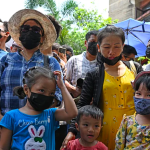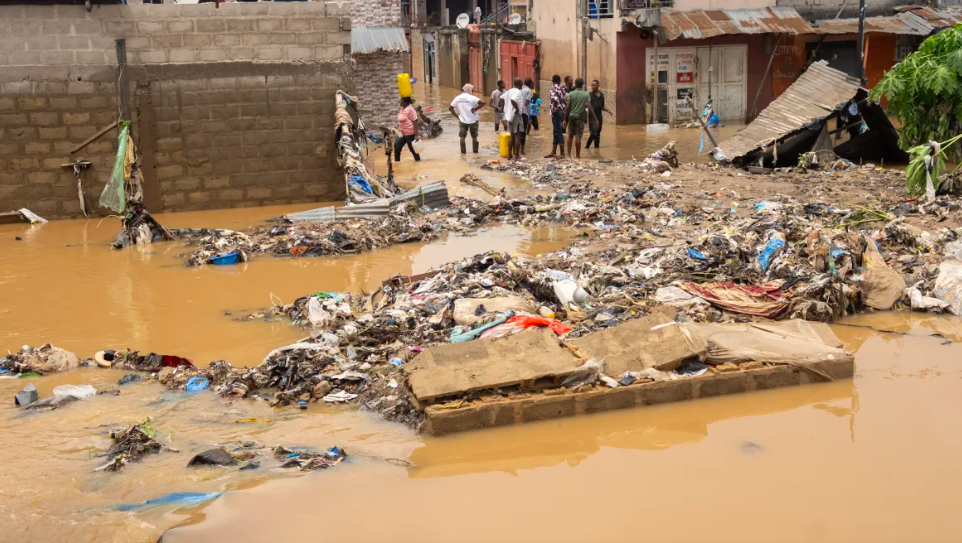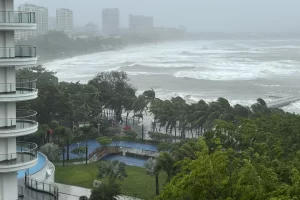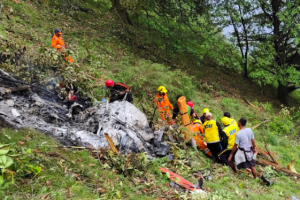One of the hardest-hit places was Kinshasa, the capital of the Democratic Republic of Congo, which in mid-June 2025 was hit by heavy rains that caused floods and landslides, leaving at least 29 people dead across eight of its 24 municipalities. Ngaliema was the hardest hit, with 17 people killed by landslides on its hilly slopes. The rains, which had poured down out of nowhere during the dry season, on June 14 and 15, submerged some 600 homes in low-lying areas like Matete, Masina and Lemba, while landslides wiped out informal settlements. Two bridges in Kalamu collapsed and the main roads like Avenue Tourisme and Route de Matadi were unusable, paralysing transport and trade. Thousands lost power and water treatment plants flooded, leaving many without clean water and fueling concerns about cholera. There are early estimates that more than 10,000 people were forced from their homes, and exact numbers were still being tabulated on Sunday.
The population of Kinshasa, which has grown to almost 18 million with an annual increase of 4.4 percent, has surpassed its urban planning. Some 60% of people live in informal settlements, usually on floodplains or unstable hillsides, because of a lack of land and failure to implement zoning regulations. Erosion in Binza Delvaux has been an issue for decades, but construction continues in these hazardous areas. The city’s drainage systems, remnants from the colonial era, serve less than 20 percent of Kinshasa and many of those are clogged with the 7,000 tons of rubbish it produces daily, much of it being dumped in waterways. The absence of infrastructure transformed the rains into a lethal disaster.
The city’s infrastructure is ill suited to extreme weather. Existing drainage systems, constructed when the population was much lower, are unable to accommodate high runoff volumes. Tributaries such as the Ndjili and Kalamu rivers, passing through heavily populated areas, do not have embankments or get dredged, and they overflow often. Just 15% of Kinshasa’s roads are paved, and few of them are built to withstand flooding. The June rains surprised authorities, who had few flood defenses in place due to the dry season. Water treatment breakdowns helped to precipitate the disaster, when the crisis led to reliance on contaminated sources.
Climate change is exacerbating it. Central Africa’s climate is becoming more unpredictable, with weather like June rains increasingly normal here. Intense rainfall events are fueled by rising global temperatures, which have warmed 1.3°C above pre-industrial levels. Deforestation, with 70% of the forest around the site being cleared for fuel and farming, has limited the ability of the soil to absorb water, leading to increased runoff. Wetlands and swamplands in the city have been developed, reducing natural drainage. Without action, experts say, the frequency of those kinds of floods could double by 2030.
It was compounded by a lack of preparedness and governance. The D.R.C.’s meteorological body, Mettelsat, has been getting better at forecasting rainfall, but local warning systems did not reach residents in time. The emergency response was slow, with shelters and supplies reaching only a third of affected areas within 48 hours. Elevated on past pledges, such as Gov Bumba’s pledge in April 2025 to repair water infrastructure in the wake of floods that left 165 dead, progress has so far been limited with just one out of the three plants damaged repaired. Big obstacles are corruption and underfunding: less than 5% of Kinshasa’s 2025 budget goes to infrastructure even as risks mount.
This is something we need to address now. Increasing drainage, or half the city through cemented channels, and maintenance would have also helped avoid flooding, the authors say. Enforcing zoning laws to prevent construction in flood plains and on slopes, combined with making housing affordable in other areas, are essential. Planting tree belts along rivers and restoring wetlands could increase the amount of runoff absorbed by 20 percent by 2030. Warnings might be better if they were delivered by community-based alerts via radio and mobile networks, based on Mettelsat’s data. We need to be using flood-resistant materials to rebuild bridges and roads and elevating infrastructure from flood levels. Ramping up trash collection to handle half the city’s daily garbage might unclog waterways.
The June flooding in Kinshasa comes after a disaster in April that affected 13 municipalities and the May tragedy in South Kivu, where 30 people died. The Congo River Basin, where 75 million people live, is a hotspot for floods, with Kinshasa at the center. With the city’s population expected to balloon up to 25 million by 2035, the risks will only increase. Local universities and nongovernmental organizations are advocating for more data-driven planning, but the funds and the political will are not there, they say. Uncoordinated action, at unacceptably slow speed, will doom Kinshasa to a future of increasingly catastrophic disasters.











Add Comment